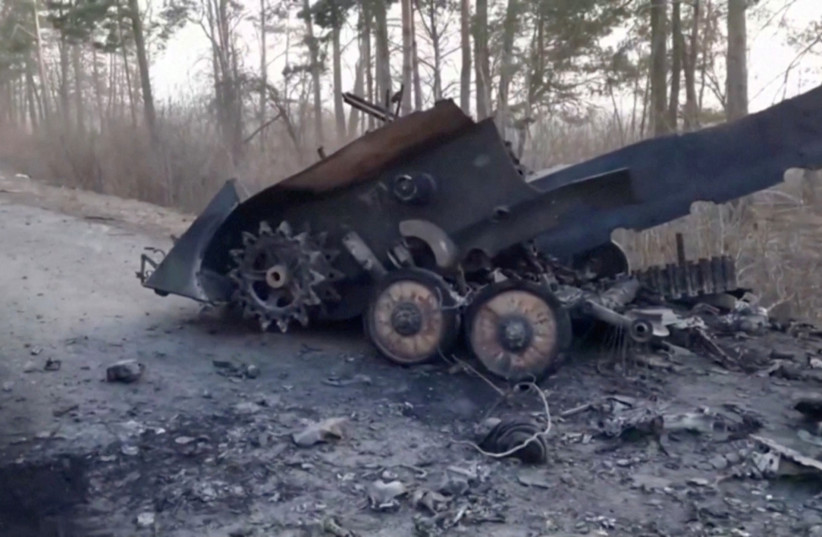One of the emerging stories in the Ukraine conflict is the ability of the embattled country to keep its Turkish-made armed drones flying. The Bayraktar drone – a relatively new armed technology created by Turkey’s local arms industry – has been used in Syria and Libya by Ankara, and its success there led to increased sales abroad over the last several years.
Since the conflict began, there has been a focus on the fate of Ukraine’s two dozen Bayraktar drones. Ukraine does not have a large air force, and it was expected that Russia could gain air supremacy quickly over Kyiv. However, a week into the war, it is not clear if Russia has succeeded.
Reports say that Moscow has not committed most of its air force, but on the other hand, Ukrainian pilots seem less active – and Russia did say on Monday that it controlled the skies.
The Bayraktar TB2 that Ukraine uses has a length of only six meters (20 feet) and a wingspan of 12 meters. It weighs around 650 kg (1,433 lbs.) and can carry around 65 kg of munitions, usually including four missiles.
The US Reaper drone by comparison weighs three times as much, at about 2,000 kg (just under 3,100 lbs.), with more than 21 times the payload capacity of 1,400 kg. It can carry seven armaments or other devices, usually four missiles and two bombs. The US Predator, an ancestor of the Reaper, had a weight of 500 kg (1,100 lbs.) and could carry a payload of 500 kg as well, making it about the same weight as the Bayraktar but with more potential for heavier armaments.

Russia has amassed long convoys of vehicles to enter Ukraine, including one that stretches dozens of kilometers. If the Ukrainian Air Force was active, Russia would not be so obvious. However, Ukrainian social media has said the Ukrainian drones are still active in striking trains, convoys and vehicles of the Russian aggressors.
Middle East Eye, which tends to be pro-Turkey, noted on Monday that “footage released by the Ukrainian military over the weekend indicated that TB2s were operating against Moscow’s forces, destroying long Russian military columns in Kherson, near Kyiv. Dozens of lives and equipment were reportedly lost in the Bayraktar strikes.”
Pro-Ankara media has an interest in talking up the drones, because it is a good way to prove they can survive in contested airspace. Slow-moving armed drones, like the Reaper, cannot perform well in areas where an enemy has air defense, because they do not have a way to avoid radar, and they don’t fly fast.
According to the website Defense-Blog.com, the drones continue to carry out strikes.
“According to the chief of Ukraine’s Air Force, Lt.-Gen. Mykola Oleshchuk, Turkish-made Bayraktar TB2 drones have carried out strikes on Russian troops in the Kherson region and near the city of Malyn, about 60 miles northwest of Kyiv,” the website noted.
Videos posted on social media show several such strikes. It is difficult to confirm or locate them. Reports generally place the strikes on the Crimea front line. This means they are not stalking the main Russian thrust at Kyiv, where a 60-km. convoy of Russian vehicles has been seen, but are hitting the soft underbelly of the Russian offensive. Although that does not mean Russia lacks air defense in Crimea, it should have air defense there to protect the Russian fleet.
That the Ukrainian drones are flying sorties from western or southern Ukraine seems apparent. They supposedly have a range of thousands of kilometers but need communications links. The distance from western Ukraine to Crimea is 800 km. (500 miles).
Ukraine’s Turkish drones are therefore turning out to be an important aspect of the invaded county’s defense against its huge and powerful eastern neighbor.
